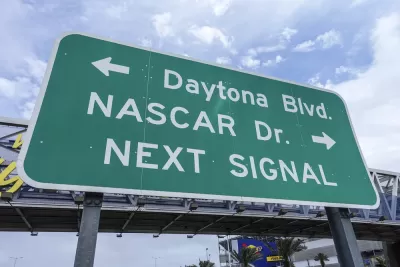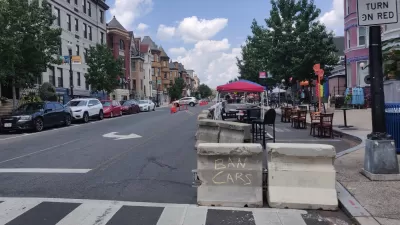Florida’s incremental steps toward complete streets have saved thousands of lives, but still left it one of the most dangerous states to walk in.

Angie Schmitt shares research on the impacts of Florida's 1978 complete streets policy, which mandated the development of new bike and pedestrian infrastructure statewide.
The good news: Researchers found that in the three decades since the law was passed, pedestrian deaths in Florida have dropped by 60 percent.
"Pedestrian deaths fell faster in Florida after the complete streets law was adopted than they would have if the state had tracked trends in peer states or the U.S. as a whole," Schmitt writes. "The difference added up to between 3,500 and 4,000 lives saved over a 30-year period."
But despite comparatively strong policies and substantial improvement, Florida still consistently ranks as one of the most dangerous states for pedestrians.
"Other state policies worked against the goals of the complete streets law," Schmitt explains. And an embedded car culture at the Department of Transportation kept state projects oriented toward motor vehicles.
The new study comes from a team of University of Georgia researchers led by Jamila Porter.
FULL STORY: Florida’s Complete Streets Law Saved Thousands of Lives, and That Wasn’t Enough

Planetizen Federal Action Tracker
A weekly monitor of how Trump’s orders and actions are impacting planners and planning in America.

Maui's Vacation Rental Debate Turns Ugly
Verbal attacks, misinformation campaigns and fistfights plague a high-stakes debate to convert thousands of vacation rentals into long-term housing.

Restaurant Patios Were a Pandemic Win — Why Were They so Hard to Keep?
Social distancing requirements and changes in travel patterns prompted cities to pilot new uses for street and sidewalk space. Then it got complicated.

In California Battle of Housing vs. Environment, Housing Just Won
A new state law significantly limits the power of CEQA, an environmental review law that served as a powerful tool for blocking new development.

Boulder Eliminates Parking Minimums Citywide
Officials estimate the cost of building a single underground parking space at up to $100,000.

Orange County, Florida Adopts Largest US “Sprawl Repair” Code
The ‘Orange Code’ seeks to rectify decades of sprawl-inducing, car-oriented development.
Urban Design for Planners 1: Software Tools
This six-course series explores essential urban design concepts using open source software and equips planners with the tools they need to participate fully in the urban design process.
Planning for Universal Design
Learn the tools for implementing Universal Design in planning regulations.
Heyer Gruel & Associates PA
JM Goldson LLC
Custer County Colorado
City of Camden Redevelopment Agency
City of Astoria
Transportation Research & Education Center (TREC) at Portland State University
Jefferson Parish Government
Camden Redevelopment Agency
City of Claremont





























